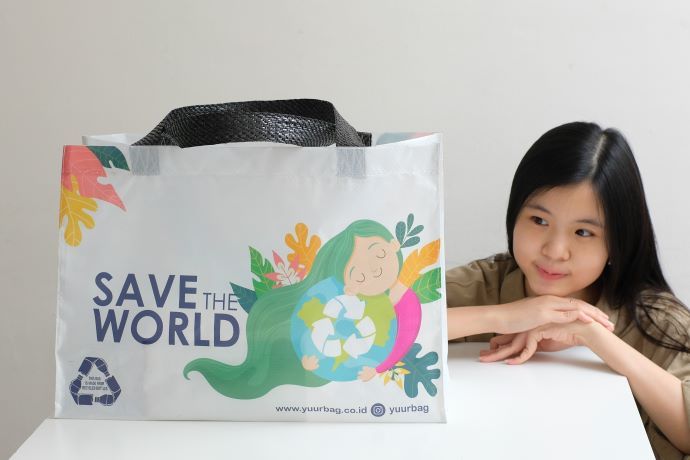What is High-Density Polyethylene (HDPE)?
Key Takeaways:
- Strength, chemical resistance, and low moisture absorption make HDPE indispensable in packaging, construction, automotive, and agriculture.
- Advanced recycling innovations are crucial since traditional recycling methods often degrade HDPE quality.
- With sustainability pressures rising, HDPE’s future depends on responsible use, certification, and better recycling technology, positioning it as a durable yet eco-friendly material.
High-Density Polyethylene (HDPE) is one of the most versatile and widely used plastics in the world. From milk jugs and water pipes to fuel tanks and geomembranes, this polymer is everywhere.
But what exactly is HDPE, how is it made, and why do industries rely on it so heavily?
In this guide, we’ll walk through HDPE’s unique properties, production process, applications, environmental impact, and future outlook—plus practical buying tips for businesses looking to source HDPE responsibly.
How HDPE is Made
HDPE is produced by polymerizing ethylene monomers under controlled conditions. Unlike LDPE, which has a branched molecular structure, HDPE has a linear structure with high crystallinity, giving it superior strength and chemical resistance.
Two common catalysts are used:
- Ziegler–Natta catalysts (traditional, widely used).
- Metallocene catalysts (offer more precise control of polymer properties).
This structure is what makes HDPE different from LDPE or PP—and why it performs so well in demanding applications.
Key Properties of HDPE
| Property | Typical Range / Value | Test Standard |
| Density | 0.941–0.965 g/cm³ | ASTM D792 / ISO 1183 |
| Melt Flow Index (MFI) | 0.2 – 20 g/10 min (depends on grade) | ASTM D1238 |
| Tensile Strength (Yield) | ~20–37 MPa | ASTM D638 |
| Flexural Modulus | ~700–1400 MPa | ASTM D790 |
| Elongation at Break | 100–1000% (varies by grade) | ASTM D638 |
| Melting Point | ~120–135°C | DSC (ASTM D3418) |
| Service Temperature | -40°C to +60°C (short-term higher) | - |
| Water Absorption | <0.01% | ASTM D570 |
Why this matters for buyers: Always request a Certificate of Analysis (CoA) that includes density, MFI, tensile strength, moisture content, and contaminant checks before purchasing HDPE resin.
Also Read : Understanding HDPE Pellets Properties and Applications
Grades of HDPE and Their Uses
Different processing grades exist, each tailored to specific applications:
- Blow Molding Grade: Used for bottles, containers, fuel tanks.
- Injection Molding Grade: Ideal for caps, closures, household items.
- Film Grade: Used for thin, flexible packaging (bags, liners).
- Pipe/Extrusion Grade: Used in water pipes, conduit, and geomembranes.
- Rotational Molding Grade: For large, hollow products like tanks.
Tip: When sourcing HDPE, confirm the grade matches your end-use requirements.
Applications of HDPE
HDPE’s balance of strength, toughness, and chemical resistance makes it a go-to across industries:
- Packaging: milk jugs, detergent bottles, grocery bags.
- Construction: Widely employed for HDPE pipes, ggeomembranes, barriers.
- Automotive: Fuel tanks, seat components, protective covers.
- Agriculture:Irrigation systems, reservoir liners.
- Recreation & Consumer Goods: Playground equipment, sports gear, furniture.
HDPE vs Other Plastics
| Material | Density | Flexibility | Chemical Resistance | Common Uses |
| HDPE | 0.941–0.965 g/cm³ | Stiff, durable | Excellent | Pipes, bottles, tanks |
| LDPE | 0.910–0.940 g/cm³ | Flexible, soft | Good | Films, bags, wraps |
| PP (Polypropylene) | 0.895–0.920 g/cm³ | Semi-rigid | Excellent | Containers, fibers, packaging |
| PET | 1.34–1.39 g/cm³ | Rigid | Moderate | Bottles, textiles |
Environmental Impact of HDPE
HDPE is recyclable under resin code #2, but mechanical recycling can lower its properties. Common issues include contamination, color degradation, and reduced strength.
The main challenges:
- Large landfill presence: HDPE bottles and pipes often end up in waste streams.
- Quality drop during recycling: Recycled HDPE (rHDPE) can be more brittle if not properly processed.
Also Read : Recycled HDPE vs. Virgin HDPE: A Comprehensive Comparison
Innovations in Recycling
Companies like Langgeng Jaya Group are investing in advanced recycling technologies to tackle these issues.
By recycling HDPE into high-quality raw materials, they transform post-consumer plastic waste into eco-friendly products.
These materials are repurposed to create sustainable solutions, such as reusable grocery bags, durable pipes, and other environmentally conscious products.
Through continuous innovation, Langgeng Jaya Group reduces waste and contributes to a circular economy, where plastics are reused rather than discarded.
While challenges remain in terms of managing HDPE waste and improving recycling efficiency, the work of organizations dedicated to sustainability showcases the potential of HDPE to become a greener material.
By prioritizing advanced recycling techniques and promoting eco-friendly products, HDPE producers and recyclers like Langgeng Jaya Group help address global environmental concerns while meeting industrial needs.
Buying Checklist: What to Ask Before Ordering HDPE Resin
When sourcing HDPE, always request:
- Density & MFI values (ensure grade suitability).
- Moisture content ≤0.2% after drying.
- Ash content ideally <0.5%.
- FTIR scan for contaminants.
- DSC analysis for thermal properties.
- Compliance certificates (FDA, ASTM, ISO if relevant).
Conclusion: The Future of HDPE
High-Density Polyethylene remains a cornerstone material in modern life. Its unique mix of strength, cost-effectiveness, and recyclability ensures demand across industries.
With sustainability now a priority, companies like Langgeng Jaya Group are proving that responsible recycling and innovation can extend HDPE’s value far into the future.



